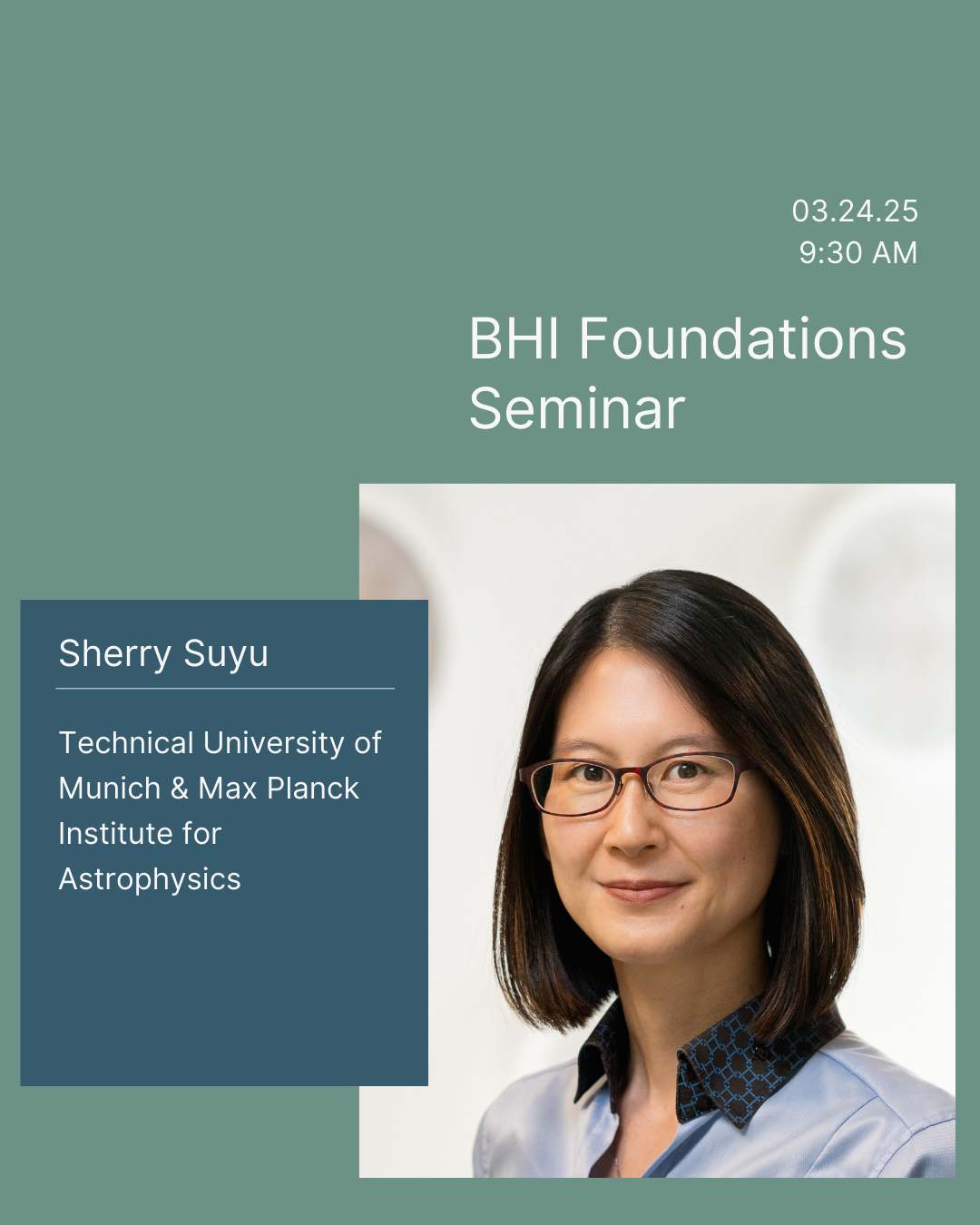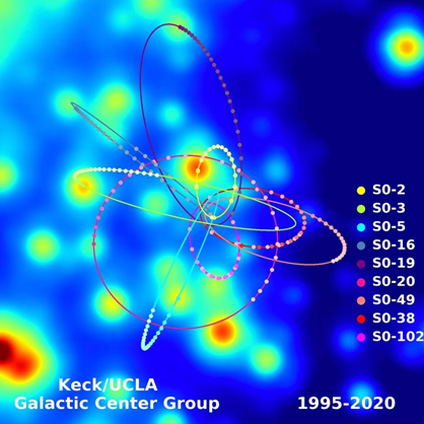Foundations Seminar
Monday, March 24, 2025
9:30 AM
Foundations Seminar
Sherry Suyu

Description
Peering at Black Holes through Cosmic Lenses
Abstract: Gravitational lensing, the bending of light by massive objects, provides an excellent way to study both cosmology and black holes. When a quasar lies behind a massive galaxy, the foreground lens galaxy bends the quasar’s light and produces multiple images of the background quasar. Differences in the arrival times of these images can then be used to determine the Hubble constant (H0), which sets the expansion rate of the Universe. Such independent measurements of H0 are important for assessing whether new physics beyond the standard cosmological model is needed, given the current tension in H0 measurements. Lensed quasars also provide a magnified view of black holes and their host galaxies, offering insights into their co-evolution. Furthermore, strong lensing of black holes that tidally disrupt stars allows us to investigate these black holes in greater detail. I will highlight recent strong lensing studies of quasars and tidal disruption events (TDEs). Upcoming surveys, particularly the Rubin Observatory Legacy Survey of Space and Time, are expected to discover thousands of lensed quasars and the first lensed TDEs, providing exciting prospects for advancing black hole and cosmological studies through strong lensing.
When
Monday, March 24, 2025 9:30 AM
Where
Share
BHI Publication
Expanding Sgr A* dynamical imaging capabilities with an African extension to the Event Horizon Telescope
April 1, 2023
Astrophysical jets are relativistic outflows that remain collimated for remarkably many orders of magnitude. Despite decades of research, the…
Read The BHI Publication



